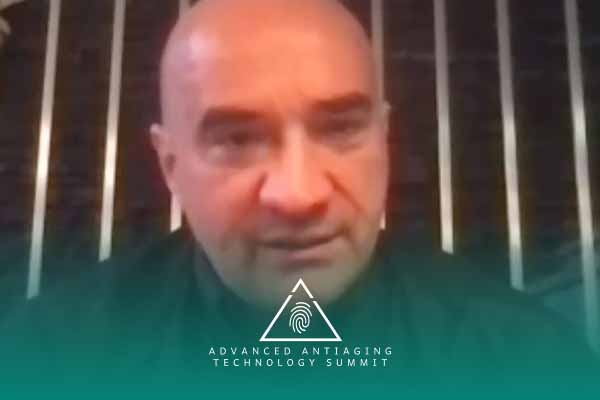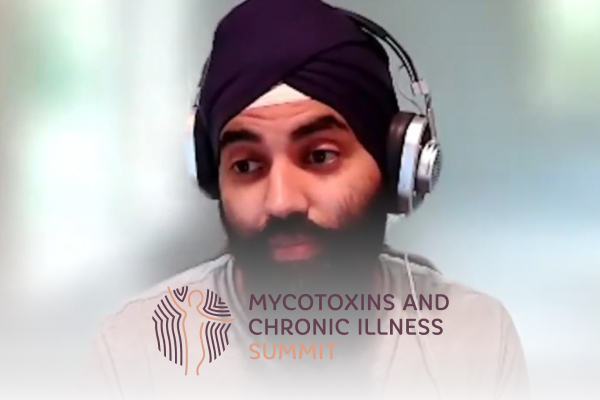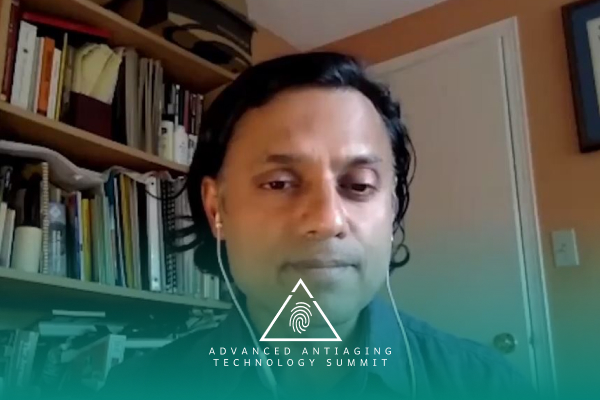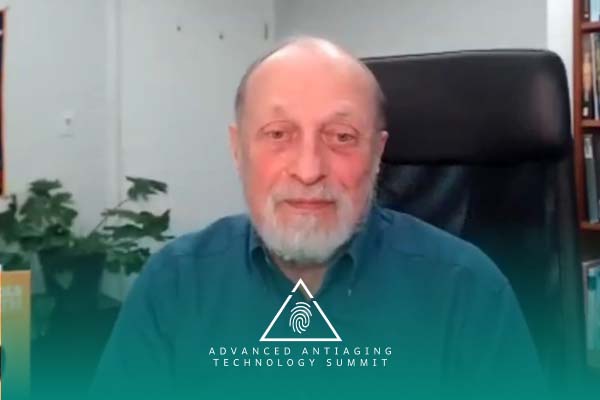Join the discussion below

Dr. Goel is a medical physician and founder of Peak Human Labs. His mission is to speak knowledge of the latest cutting edge medical tools and science in order more people to live in a Peak mental, physical and spiritual state. You can learn more about his work at longevity.peakhuman.ca. Read More
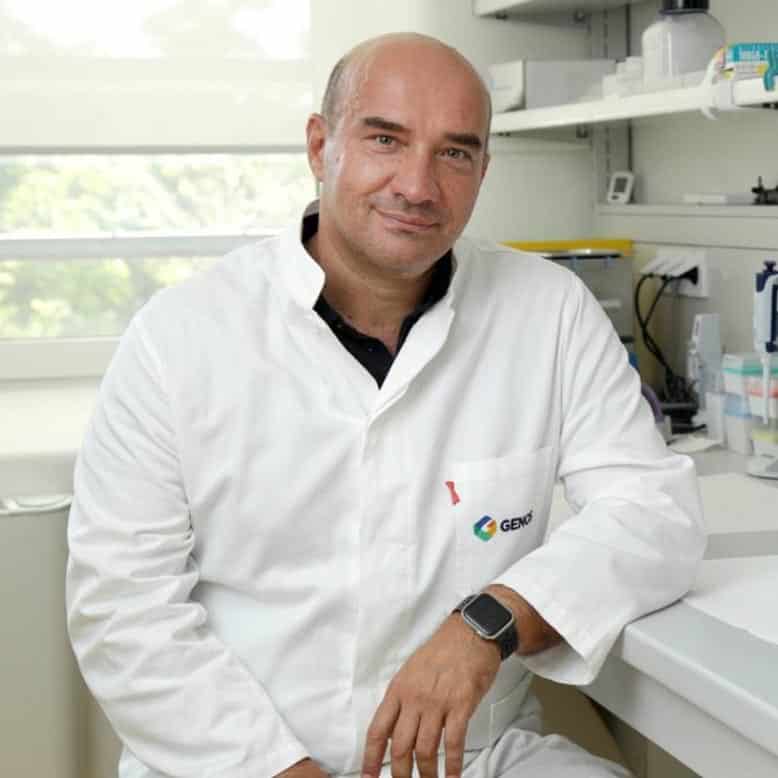
Gordan Lauc is the Professor of Biochemistry and Molecular Biology at the University of Zagreb, Director of the National Centre of Scientific Excellence in Personalised Healthcare, honorary professor at the University of Edinburgh and the Kings College London and member of the Johns Hopkins Society of Scholars. In 2017 he... Read More
Glycans in Immunoglobulins: Glycans are complex sugar molecules found on the surface of various biological molecules, including immunoglobulins (antibodies). These glycans play a crucial role in modulating immune responses and are involved in controlling inflammation in the body.
Glycan Age and Health: Glycans are associated with aging, and their composition changes over time. Research suggests that as people age, their glycans shift towards a more pro-inflammatory state, contributing to age-related chronic inflammation. This age-related change in glycans, known as “glycan age,” is linked to various health conditions.
Potential for Intervention: Studies are ongoing to understand how lifestyle changes, diet, and certain interventions might influence glycans. Improving glycans may have a positive impact on health by reducing inflammation. While there’s still much to learn, glycans offer a potential avenue for enhancing overall well-being and potentially slowing down the aging process.
Related Topics
Aging, Biomarker, Chronic Inflammation, Glycans, Glycosylation, Immunoglobulins, Inflammation, Monoclonal Antibodies, Precision MedicineSanjeev Goel, MD, FCFP (PC), CAFCI
Hi everyone, I’m Dr. Sanjeev Goel, and you’ll be listening to the “Advanced Anti-aging And Technology Summit.” Today, I’ll be interviewing Dr. Gordan Lauc. Gordan Lauc is a Professor of Biochemistry and Molecular Biology at the University of Zagreb. Director of the National Center of Scientific Excellence and Personalized Healthcare. Honorary Professor at the University of Edinburgh, and the Kings College London. And, member of the John Hopkins Society of Scholars. In 2017, he initiated the launch of “The Human Glycome Project” and he’s one of its two co-directors. His research team is pioneering high-throughput glycomic analysis, and application of glycan biomarkers in the field of precision medicine.
By combining glycomic data with extensive genetic epigenetic, biochemical, and physiological data, in a systems biology approach. They’re trying to understand the role of glycans in normal physiology and disease. Professor Lauc, has co-authored over 200 research articles that are cited over 5,000 times. In 2007, he founded Genos, a biotech company that is currently global leader in high-throughput glycomics. Research in Genos led to the development of the GlycanAge test of biologic age. I hope you enjoy today’s talk with Dr. Lauc. Okay, welcome Dr. Gordan Lauc. I really appreciate your time today, to talk about this whole new field of glycanomics. I’m not sure what the word is, but thank you. Thank you for taking the time all the way from Zagreb.
Gordan Lauc, Ph.D
So, thank you for the invitation. It’s a pleasure to join you and talk about glycans because yes, I think glycans are something which is very important. I work in the field for nearly 30 years now, so I’m kind of a dinosaur of the field. But unfortunately, not so many people know about it because it’s not being presented in high schools, not even at university level. Very few physicians have heard about glycans and practically every protein which has been invented after we became multicellular organisms is like constellated and glycans play in important role in many physiological processes. Practically, virtually everything which is above the level of a single cell, involves some part of the glycans. So, we have to learn more about them and we have to start using this knowledge.
Sanjeev Goel, MD, FCFP (PC), CAFCI
Right, so maybe just take us back, how did you even come up across this whole field, like 30 years ago? Like how did you decide this was an interesting thing and had a such a huge impact.
Gordan Lauc, Ph.D
But it was the kind of serendipity then, because at one point there was a novel kit to look for glycans. And my boss at the time was interested for novel things. He said, let’s try this. We tried that. And it was interesting, and I’m a stubborn guy and I continued to going to that direction because we were learning more, and more, and more, and it’s becoming more and more interesting. And so far, we have analyzed over 150,000 different people from different clinical cohorts, genetic cohorts. And we are learning that glycans actually are big part of interindividual variation.
So for example, blood groups are glycans. If you think about the A, B, and O blood groups, chemically they are glycans. But, there are thousands and hundreds of thousands different glycoproteins which all make us different. And this is what is very important in this field called the precision medicine, where we are trying to identify differences between people and see why are people different, and why each of us would respond differently to the same food, same type of exercise, same drug. But people respond differently, because they are different at the molecular level and one of these differences are glycans.
Sanjeev Goel, MD, FCFP (PC), CAFCI
Are you saying the biggest interindividual variation is due to glycans, is that right?
Gordan Lauc, Ph.D
Yes, the huge part of interindividual variations are glycans
Sanjeev Goel, MD, FCFP (PC), CAFCI
And, are these all… They haven’t been all been mapped out. it sounds, like you were saying that’s 150,000 different glycans?
Gordan Lauc, Ph.D
No, It’s even more complicated. So, the individual glycans blocks are not so complicated. There are a couple of thousand of them, but they get combined in the many different way. For example, immunoglobulin antibodies which has a single polypeptide chain can come in over 900 different glycan forums having different glycan attached to it, and each of them is little bit different. So, it is immense complexity. It’s several orders of magnitude more complicated than the genes and the proteins. And this is actually what enabled the life at this planet to be so diverse and so complex as it currently is.
Sanjeev Goel, MD, FCFP (PC), CAFCI
Oh my God, I think you just blew my mind. You’re saying that this is as big as like the ocean like we just discovered a whole new field of a metabolic medicine or something.
Gordan Lauc, Ph.D
Look, something like decade ago, I think I wrote the paper with the title that “Epigenetic Regulation of Glycosylation Is The Quantum Mechanics of Biology.” So, it’s another layer of complexity because there are two things. First, the structural diversity, so glycans have many different structures. And the second one is a genetic complexity, because normally, each protein is being coded by a single gene. So, you inherit the gene to have a specific protein but for glycans, they’re in coded in a network of dozens or even hundreds of genes. So, you have a network defining the chemical structure which is being inherited as a complex trait but through many genes.
So it’s, yes, it’s entire ocean, entire universe of complexity, which are actually glycans and we are just learning tiny little bits of it. We, for example, one of the proteins which has been studied a lot are immunoglobulins. So, we know a lot about how antibodies get glycosylated, what these glycans do, how do they make them different? And you know that now many drugs are, all those smart drugs, many of the smart drugs are immunoglobulins. So, monoclonal antibodies are drugs. And now they’re next generation of these drugs which are being glycoengineered. So, you put a different glycan and then you have a drug which has, for example a hundred times more effective than the original one. And the only difference is a tiny little glycan at the end of the structure. And, then you have a hundred times more potent drug. So, it’s a whole new field, this dimension, whole new ocean.
Sanjeev Goel, MD, FCFP (PC), CAFCI
That’s so interesting. So like, let’s take a step…. One before we get into the immunoglobulins that… So, Hemoglobin A1c, so this is a glycosylated hemoglobin, is that right? And so is that a type of glycan marker, is that a type of glycan?
Gordan Lauc, Ph.D
This is a common confusion. So, chemically it is glycosylated because it does have a glycan which is chemically bound to protein, but then we call it the glycated, nonglycosylated just to make a difference. And this process of glycation is a random chemical reaction between glucose which is an aldehyde, and the amino groups on a protein. So it’s a kind of random, it’s a chemical reaction which happens when the glucose is elevated. So people with diabetes would have a higher level of HbA1c and this biomarker is used to measure the burden of glucose. So people who have high glucose will have more HbA1c. But, this is something biologically very different because glycated hemoglobin, this is an error which happens when the glucose is high.
Glycosylation is an enzymatic process regulated by hundreds of enzymes, many transcription factors where the structure is designed by evolution. So evolution decided which glycan structure to have in a specific site because it will have a biological function. So these two things are actually very different, biologically, functionally. Although strictly chemically, yes, glycated hemoglobin is a glucose attached to hemoglobin. while the glycans, I’m talking about are oligosaccharides with 10 to 15 different monosaccharides in the different spatial distribution. And they actually represent part of the molecule which does the work.
Sanjeev Goel, MD, FCFP (PC), CAFCI
Wow, okay. So then, so I understand. So, this thing about the biomarker for aging, let’s move on to that. It looks, I guess it’s a glycan, looking at the glycans attached to an immunoglobulin G, is that correct?
Gordan Lauc, Ph.D
Yes.
Sanjeev Goel, MD, FCFP (PC), CAFCI
So, can you tell me a little bit about, yeah, go ahead.
Gordan Lauc, Ph.D
So, we are interested to learn how people are different in way they glycosylate proteins and what are the functional consequences? And we started many large cohorts, as I said, over 150,000 people so far. And what we learned, as one of the first finding, was the glycans change a lot with age. So when people are young, their immunoglobulins have one type of structures which is relatively large, has the galactose and sialic acid at the end. Well as we are getting older, this structures are becoming a little bit smaller. They’re missing some of these sugars at the end but this is not just kind of a wear and tear of glycosylation, but it’s a reflection of changes with happen with aging. And the main, one of the main changes is increasing inflammation because as we are young, we are keeping our inflammation controlled.
Although actually it’s not completely true because when we are kids, inflammation can also explode. But after puberty and in our early twenties and thirties we keep our inflammation controlled. And one of the elements which suppress inflammation are this glycans and immunoglobulins. So these glycans are actively suppressing inflammation. And we, I think the best example of this is, there is a therapy called IVIG, Intravenous immunoglobulins which is being used in some clinical situations. If you give immunoglobulins from young person to an older person you have a systemic suppression of inflammation. And this systemic suppression of this low grade chronic inflammation is resulting in a phenomenon that these older people have a lot of energy.
They feel much younger. They feel much better because they’re not wasting all the energy they have on this low grade chronic inflammation. And when we are young, this is happening natural so our immunoglobulins are suppressing inflammation. As we are getting older, these old glycans are activating some of the molecular mechanisms which leads to inflammation. So, they’re actually promoting inflammation and by promoting inflammation, and we are talking about the low grade chronic inflammation a little bit of inflammation everywhere. And inflammation is a kind of like a reset button on a different location in a body. Just like you are resetting your computer to just shut everything down and build it again.
The same thing inflammation does, they go on a specific location, neutrophils kill everything. And then everything is being rebuilt which is extremely expensive. So, we are spending huge amount of our biological energy on this low grade chronic inflammation. And in immunoglobulins, in old people are actually promoting this inflammation. And the second thing we learned, is that this change from young kind of healthy monoglycans to old inflammation multiglycans. It’s not exactly following the trajectory of chronological age. Some people move much faster into this old glycans while some people go slowlier. And this difference between glycan age and the chronological age, associates with many biomarkers of unhealthy life. For example, if you’re obese, your glycans are going much faster to towards these pro-inflammatory old glycans. If you are under too much stress, if you are developing many different conditions, this happens also. But the interesting thing is, that these glycans actually change before people become ill.
For example, we have studied thousands of people with inflammatory bowel disease, with our trial test with different inflammatory conditions and they all have older glycans. So, young people with rheumatoid arthritis will have glycans of a much older person. But these glycans become old, before the person developed a disease. So, it is not that the disease is driving the glycans but glycans change first. And actually they seem to contribute to development of disease because they promote inflammation. So the idea we have now is, not to wait until people get ill because unfortunately, modern medicine functions in a way that you go to the hospital only when you are sick, when you have pain somewhere, and something is not working, then you go and say help me, cure me. And most of the times, these are chronic diseases which you can’t cure anymore. So people say, they, we call them chronic because they stay forever.
So people, they just go to diagnosis and then they get therapy for most of their lives. And we hope that if you go early, and you catch this biomarker changing before any other symptoms and we know that glycans not only biomarkers, they are effectors, they work toward disease development. If you can fix them, if you can repair them on time, you will develop a disease much later or not at all. And this is why I don’t like to talk about glycans as biomarkers of aging, they are biomarkers of aging. They’re actually functional effectors of aging. So if you improve your glycans, you’re actually slowing down your aging. And we did many studies where we can actually, where we have seen that there are ways to improve your glycans. So, by changing your lifestyle, the diet, losing extra weight. You can actually improve your glycans. And this is what we are now trying to understand how a given person can change their IgG glycans because we are not all the same. Not everything works for everybody.
Sanjeev Goel, MD, FCFP (PC), CAFCI
Is there a genetic, some risk factors that put people at a higher rate of glycan aging? Like, is there a specific, genes, snips, whatever?
Gordan Lauc, Ph.D
This is very important question, of course. And the genetics is an important component and glycans are heritable. And heritability is the measure how similar we are to our parents. So if something is highly heritable, it’s mostly genetic. If it is not heritable it’s mostly environmental and glycan on average, 50% heritable and 50% environmental. But those glycans, which change with age are actually even less heritable, they’re approximately 30% heritable while 70% is environmental. So, maybe between one third and one half of our glycogen composition is defined by our genes. So, some people just have genes which make their glycans older, but even in them 50% of this variation can be altered by a lifestyle.
While in other people it’s even less. So most of it, it’s lifestyle. So yes, genes are important but genes are something we cannot change. And for example, there, I also… I’m a Professor of Molecular Biology. So, I also teach genetics and also have a laboratory which is doing genetic analysis. And the key problem we have with the genetic risk factors are all the genetic analysis is that you can do a test and find that somebody has twice as high risk for a diabetes but whatever this person does, this risk will always be twice as high because you cannot change your genes. While glycans, you can actually see the improvement. We can also say that, okay, based on glycans you have a higher risk to develop some diseases.
Although, we cannot make these claims officially because they are not approved by the FDA, but we can say there is the research saying that these things are linked and then people can do something to change the diet, try some kind of a, there are many different approaches maybe we can touch it later. How you can change your glycans and then we can say, yes, you have improved. Now your risk is lower and you are way better because you probably know if there is a paper, a couple of maybe a year ago, showing very clearly that by having a healthy lifestyle habits, you can add up to 10 years of healthy life to our lifespan.
So living healthy gives you 10 healthy years but people don’t do it. And now, if you think about it, if you know something you do, will give you extra 10 years of healthy life. Why don’t we do it? And we don’t do it because the reward comes after several decades. I’m not going to suffer today, to get something after 20 or 30 years. The feedback is too long. So people smoke, people get to obese, people live unhealthy lifestyle because the reward or the punishment is so far away that you don’t think about it. Well, if or now, when we have this biomarker which actually tells you are 35, but your glycans look like you are 55 already. And then people start to think, and they change and they see their glycans going down. And then they’re motivated to continue doing this hard thing, because living healthy life is not easy. Junk food is good. People like junk food, it’s not good, it tastes good, but it’s unhealthy. Exercise is difficult.
So people avoid it, but it’s healthy. And if you do something and you see that it’s working, that’s great. And the other problem we have is, for example, my glycanage is horrible. I’m 20 plus years older than my chronological age. And when I learned that a couple of years ago, actually five or six years ago, I tried to kill myself in the gym. I was exercising three, four hours a day. I lost 10 kilos just by exercising. And the effect was minimal, because over-training is also bad thing. The wear and tear of training too much is actually promoting inflammation. And you have to find the right way, how to exercise.
You have to find the optimal amount of exercise, type of exercise, even the diet is not working in the same way for everybody. We just recently did a study, we haven’t published it yet, on over a thousand people, on five different diets for a year. And for each given diet, there were some people who improved and some who did not. So, there is no magic diet. There is no one diet which works for everybody. Some people cope with carbohydrates, just fine. They can eat carbohydrates. Other people have horrible reaction to carbohydrates. Some people need the high protein diet, other can’t stand it. So it’s, we’re all different and these glycans are a good way to see which is working for me and what is not working for me.
Sanjeev Goel, MD, FCFP (PC), CAFCI
So, what is the mechanism like, let’s say for exercise to improve glycans or weight loss like how does it actually changing this glycan moiety on the immunoglobulin? Like, how’s that happening?
Gordan Lauc, Ph.D
So, this is something what we are trying to learn now. We still don’t know much. So what we have done, we have done thousands of people where we also have a genetic data for them. And then we did something which is called the GWAS, Genome-Wide Association Studies, where we looked for links between genes and glycans. And now we have a network of over 40 genes, which regulate IgG glycosylation. And now we are dissecting these pathways to see which of them is reacting to which. For example, we know that some inflammatory processes affect glycosylation like IL-6, interleukin-6, tumor necrosis factor.
These are all proteins, which affect glycosylation. We also learned that the sample estrogen is very important, so hormone levels also heavily affect glycosylation. So what we are currently doing in my lab, we are trying to take each of these pathways, change activity of these genes. Look what will happen, and then try to find a way how to prove it. So, we still don’t know the exact mechanisms. The only real, really nice designed study we have for these pathways was with estrogen. Where we had a randomized placebo controlled trial and we really show that by removing estrogen, by adding estrogen you have this causal link between estrogen and glycosylation. For most other things, we have only correlative.
We had association, so these things associate but we cannot guarantee what causal and it’s, for example also, now we are doing many studies in the COVID field. And we see that people when they have COVID their glycans drastically change, we’re just drafting a paper on this topic. So it’s, there’s a lot of research to be done. There’s still a lot of things which we don’t know, but we are trying to learn by looking. For example, something we are really interested is different studies where people change something. They start to go on diet, they start yoga, they start exercising, they start this specific drug.
For example, we have some data indicating that when people start taking Metformin, glycans improve. So, there’s a lot of research we are doing trying to understand how and why this works. For the moment we cannot say upfront. We cannot even, I haven’t solved my glycanage, my glycanage is high. So, we still don’t have a magic solution but what we can do, we can… People can try something and then we can see whether it works for them. And for majority of people it’s relatively easy because obesity is a big driver of a IgG glycan. So, first thing is lose extra kilos. If you improve on your weight, your glycans will improve. And this works for most people, not everybody but for most it works.
If people are not obese, and have a bad glycanage, then it’s more difficult. Then it’s usually either psychological, too much stress, not enough sleep, or it could be over-training. Some people overtrain and then get their glycans worse. We have a lot of people in different gyms, especially the trainers who actually don’t look too good because they just exercise too much and they usually get very unhappy about it. But when you think about professional athletes, we considered them old in their late thirties. A professional athlete of 30 something isn’t an old, football player or whatever, and we still think we are young in our 50s nowadays. So it’s… too much sport is not something which is good for your body.
Sanjeev Goel, MD, FCFP (PC), CAFCI
That’s very interesting. We had a couple other speakers talk on that exact same, same thoughts. So do you think that, is there any other nutraceuticals, I know you mentioned Metformin, but your thoughts about potentially adaptogens, could these make a difference? Could you think make a difference on glycans, any, am just curious?
Gordan Lauc, Ph.D
I’m extremely cautious in making any claims in this direction because we have done many studies where we have seen correlation. And then we realize, it’s actually not the effect of a drug, but it’s the fact that specific group of people take a grab drug or the moment they start taking something, they also changed some other habit and then things improve. So to be able to claim that something really works, we need the proper placebo controlled trials. For example, we have a clinic in New York where most of the patients going to that clinic are 20 to 40 years younger, but I don’t know what it is that actually works because they’re taking many different supplements, hormones, many different things. So what we are doing now, we are really trying to dissect this and do the placebo controlled trials. And somehow try to predict what will work in every specific individual, not the same things will work for everybody. So it’s still not,
Sanjeev Goel, MD, FCFP (PC), CAFCI
Right.
Gordan Lauc, Ph.D
We have a magic pill that will in on sale save all the problems. But at least we have a metrics, we have a tool to check whether something works or not. And then–
Sanjeev Goel, MD, FCFP (PC), CAFCI
It sounds like, this is like the aging, it sounds like this beta that glycan increase is like a sign of aging of the immune system. At least it sounds like something like that, is that mean that something like peptides like time is an alpha, people are giving us potentials to improve, restore the immune system, or this plasma phoresis, where people are taking the blood out and yeah.
Gordan Lauc, Ph.D
Immune system is extremely complicated. There are so many different branches of the immune system. So we usually say that the glycans is aging of the immune system, but not entire immune system. There are other aspects of the immune system which are not covered in this glycan immunoglobulins which we measure but definitely it is. Immune system it is part of the process called inflammaging So as with aging, we are increasing inflammation and then inflammation is driving age, and it’s the vicious circle. And it’s clearly not directly linked to this oxidative of aging DNA damage this is not what we are measuring with glycans. It is indeed the organism level at, we can call it also part of the immune aging, although I will not claim that entire aspect of immune aging, with covered with glycan on immunoglobulins because, no, immune system is the most intricate system which we have. It’s keeping us alive against all these crazy pathogens that are around.
Sanjeev Goel, MD, FCFP (PC), CAFCI
How would you compare the glycanage with regard, compared to epigenetic clock, methylation clock, telomere length measurements.
Gordan Lauc, Ph.D
So if we talk about the epigenetic, so definitely epigenetic clock is way more accurate for the chronological age. Because the way Steve Horvath developed it, was that he measured epigenetic marks this methylation sites on hundreds of thousands of sites. And then he elected 300 and something of them which predict chronological age well. And actually his original aging clock is a kind of not too informative because it is too accurate for the chronological age. So, he now developed this a green aging clock and some others, and there are many other epigenetic clocks now on a market. And it’s a little bit difficult to know exactly which part of information each of these tests have. So, epigenetic tests are interesting. I always say for each of these tests, so each individual tests you’ll have to know, every company is selling a test is selling actually different tests.
We have to show what are they actually measuring? And what is it predicting? And can it be affected by intervention which we know are healthy. And unfortunately, for most of these tests it was shown that actually they do not respond to beneficial interventions. People lose weight and the methylation age doesn’t change that much. I think there are only one or two papers now showing effects on methylation. I know David Sinclair has some data recently where he can actually show that you can improve methylation. So I think methylation is an essential piece of information linked to aging, but it is still information.
While the glycans, glycans are effectors there molecules, which actually do the work. So, I think methylation is cool. I love methylation. We work a lot on epigenetics and it is regulating many aspects of life but it is still just the information it’s the data which is sitting somewhere. While glycans are molecules, which perform function. They suppress inflammation, they promote inflammation. So if you improve glycans, you know that you are suppressing inflammation. If you changed some methylation site, you still do not know what is the consequences. Regarding telomeres, Telomeres are very reliable marker of cell divisions, of a single cell. So on a cell level, this is the basic mechanism. How you prevent a cell of dividing indefinitely.
You put some kind of timer, you can divide so many times then you are at that. But, this is on a cellular level. We, as the trillions of cells, have very old cells and very young cells. And when you look at the telomere length, you can get very different telomere lengths if you take a different part of the same person, or if there is something going on with inflammation. For example, if there is a, some kind of mobilization of a new cells of the immune system, then the younger cells come in the bloodline and then you get completely different data than if you do it before.
So, telomeres are great for measuring individual cells and they give you a lot of information about individual cells you’re looking at. But, it’s much more difficult to interpret it on the level of an organism. So what does it mean, if at a moment I have younger cells in my blood, is this because I’m younger or that just something happened? And we had to make many new cells because I don’t know, cells died because of some reason.
Sanjeev Goel, MD, FCFP (PC), CAFCI
So that’s very interesting. I never thought of it that way. Are you saying that, when they do the leukocyte telomere length, I guess they take an average of all the cell telomere lengths that they tested. And so I guess, you’re right, it depends on what’s sample they got that day.
Gordan Lauc, Ph.D
This the only way you can do it. So you take the blood sample and then you measure the average length of all the cells in circulation at the moment, because you’re not looking at individual cells, you’re looking at the pool of cells. So, there are some studies now which do a single cell telomere lengths, and then you get 10 or a hundred thousand counts per person but it’s still, it’s an average. The factor which is affecting the telomeres the most, is the composition of the cells in your blood and they change a lot depending on the inflammatory status on some other aspects.
So it’s, as I said, it’s a very good measure at the cellular level when you’re looking at the specific cell, but at the level of organism it’s very hard to interpret. And also there’s very little data that you can actually change your telomere length. And then again, it’s a question whether it’s good or bad because genetically longer telomeres are a risk factor for cancer because the telomeres are the safety switch against cancer. So without telomeres, we would have cancer all the time. So if you genetically have longer telomeres you’re actually at higher risk for some type of cancers. Yeah, because telomeres is a safety switch against cancer. So, there’s a paper a couple of years ago they studied hundreds of thousands of people. And yes, genetical longer telomeres are risk factors for a number of different cancers.
Sanjeev Goel, MD, FCFP (PC), CAFCI
I thought short telomeres also put your risk of cancer but I guess that’s not true, short telomeres cause death?
Gordan Lauc, Ph.D
So there are some examples also where the short telomeres are at risk for some cancer, longer for some other cancers. It’s complicated.
Sanjeev Goel, MD, FCFP (PC), CAFCI
Right, wow. So let’s, coming back to the IgG glycans. So, I understand that it’s a three month window. It gives you a three month window of what happened in the last three months. Like is it completely recycling our IgG glycans, recycling completely?
Gordan Lauc, Ph.D
So, it’s little bit the half-life of immunoglobulins is approximately three weeks. So when we say three months, this is the window where we usually see the effect of the intervention. So if you decide to do something now, it takes some time. For example, I started losing weight. I lose a few kilos in a month, and then this is affecting my glycans and this takes another three, four, five, six weeks. So usually the first effects we see after two months, after three months we usually see the effect of intervention because immunoglobulins live, half-life is three weeks. So after three weeks, half of our immunoglobulins are gone and the new ones are being made.
Sanjeev Goel, MD, FCFP (PC), CAFCI
Is there a complete turnover of our glycans every six weeks? Like, is that what’s happening?
Gordan Lauc, Ph.D
So glycans do not, there’s no turnover of glycans, there’s a turnover of immunoglobulins. So, entire molecule gets remove then the new molecule is made. So it’s not… so, it’s a half in three weeks and then another half in other three weeks–
That’s right. It’s not just absolutely. But more or less after six weeks, there’s very little of the original immunoglobulins left.
Sanjeev Goel, MD, FCFP (PC), CAFCI
Right, okay. If somebody has a chronic disease already and they reduced their glycans, the glycanage have you seen from the studies, any improvement in their disease
Gordan Lauc, Ph.D
So, there was lots of work on rheumatoid arthritis, and there we do see that if you improve your glycans, usually your symptoms decrease. For example, since glycans are heavily affected by hormones. For example, women when they got pregnant, there glycans change a lot. And also disease usually goes into remission while very quickly after birth. It goes back, because gylcans go back to this pro-inflammatory stage and the disease also comes back. So yes, it is possible. In some cases, we have the data for that unfortunately, we don’t have a drug which can easily improve your gylcans. So, if there would be a drug, you take a pill and your glycans improve. It would be easy to do this type of studies. Now, most of our studies are just correlative. We can look what people have done, what has changed , and how would the glycans were changed?
Sanjeev Goel, MD, FCFP (PC), CAFCI
Sounds good. So where, what do you see the next year looking like? What are the things that you’re looking at in this whole field of glycans that you understand?
Gordan Lauc, Ph.D
As I mentioned, we already analyzed hundreds and 50,000 people, but these are mostly cross-sectional studies. So, we have a group of people A, and group of people B, and then we look for differences. Now we are mostly trying to focus on intervention studies. So we have several clinical trials ongoing in different parts of Europe,. Actually also parts of the US where people do something and then we are looking for consequences. People start taking different drugs, people lose weight, people go and start to meditate, people get COVID, people get influenza. And we look longitudinally within a person. So, how do glycans change within the same person with time and then try to understand what is the cause and what is the consequences? The second thing we are doing we are dissecting this glycosylation pathway and trying to identify targets. How we could try to change it because ideally, I would like to have a pill, take a pill change your glycans, suppress your inflammation. But, this is decades away. This is what we are dreaming about.
Sanjeev Goel, MD, FCFP (PC), CAFCI
Okay, that’s awesome. So, I think for our viewers where should they go to learn more? I mean, they may see, talk to a doctor I guess who’s perhaps knows about glycans but not too many of those. How do you, what do you suggest?
Gordan Lauc, Ph.D
So, what we are trying to the glycanage, a company to build also an education site. So there is a whole science part of the website where we are trying to communicate this really difficult chemical research to people to try to understand it because chemical glycans are very complicated. But, if you try to translate it in a language which is easier for non glyco people, there’s a lot of good data there. So I think I would start there, looking at what we have written already. There’s also thing called “The Human Glycome Project” I’m one of the two directors of this project, where we are coordinating activity of over 300 researchers at the moment. Where we are trying to do something similar like what “The Human Genome Project” was.
Where the people around the world work together to understand the human genome. Now we are trying to understand the human glycome. So there’s also the website of “The Human Glycome Project” where we also try to put all this information and just look for the word glycome, it’s a fancy new word, which is bringing a lot of knowledge to us. And it became very apparent in this COVID pandemics that glycans are so important because at the beginning even the director of ANH was blogging about this S glycoprotein without glycans. And actually there’s more glycans on this S glycoprotein than proteins. And very quickly people understood that actually glycans play a very important role there.
And actually glycans are at the frontline of this eternal war between us and viruses. And we will learn a lot more about glycans because of this pandemic because now everybody realized, wow, a virus can come and it can stop the planet. So we have to develop the real weapons which we need. And these are like this MRD vaccines, the new drugs to fight our real enemy and not just the rockets, and the bumpers, and the tanks to fight other people. So I think this will become more and more prominent in the future. And that, like we learned about the DNA with all these CSI series, they became popular in the over 20 years ago. Then everybody learns about the DNA, with time people also learn about glycans, but it will go slowly, it will not go very quickly.
Sanjeev Goel, MD, FCFP (PC), CAFCI
Yeah. Well, thank you so much. I mean, this has opened up a whole new world for me and I’m sure for the viewers, and I’m gonna become getting my glycogen test. I know it’s coming in the mail, I’ll be testing myself out as well. So, thank you so much.
Downloads

